Last Night in Old San Francisco
Things to do on the eve of the 1906 earthquake.
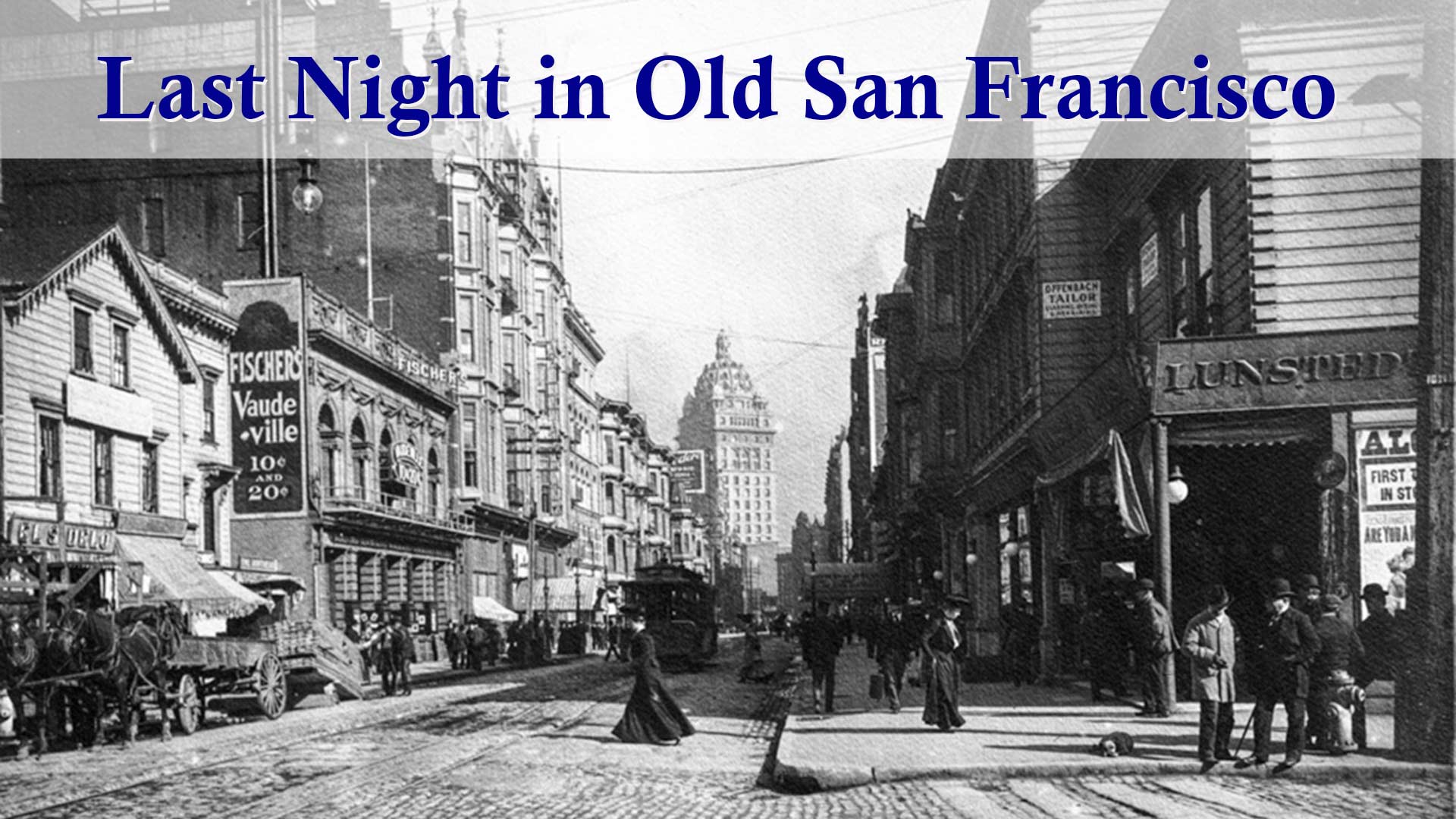
“Where I was on April 18 is a matter of history that is not being disclosed now. I can say I was home at five o’clock in the morning, though I hadn’t been in bed very long.” — George Wagner being interviewed about his memories of the April 18, 1906 earthquake.
When George Wagner gave his oral history to Bea Sebastian in 1978, he kept his San Francisco earthquake memories mostly limited to the damage and devastation he saw as a 25-year-old construction supervisor in 1906.
But his coy remark about his early morning activities a matter of history “not being disclosed now” always stuck with me. He was 97 years old when he gave the interview; when did he feel the “now” would ever be?
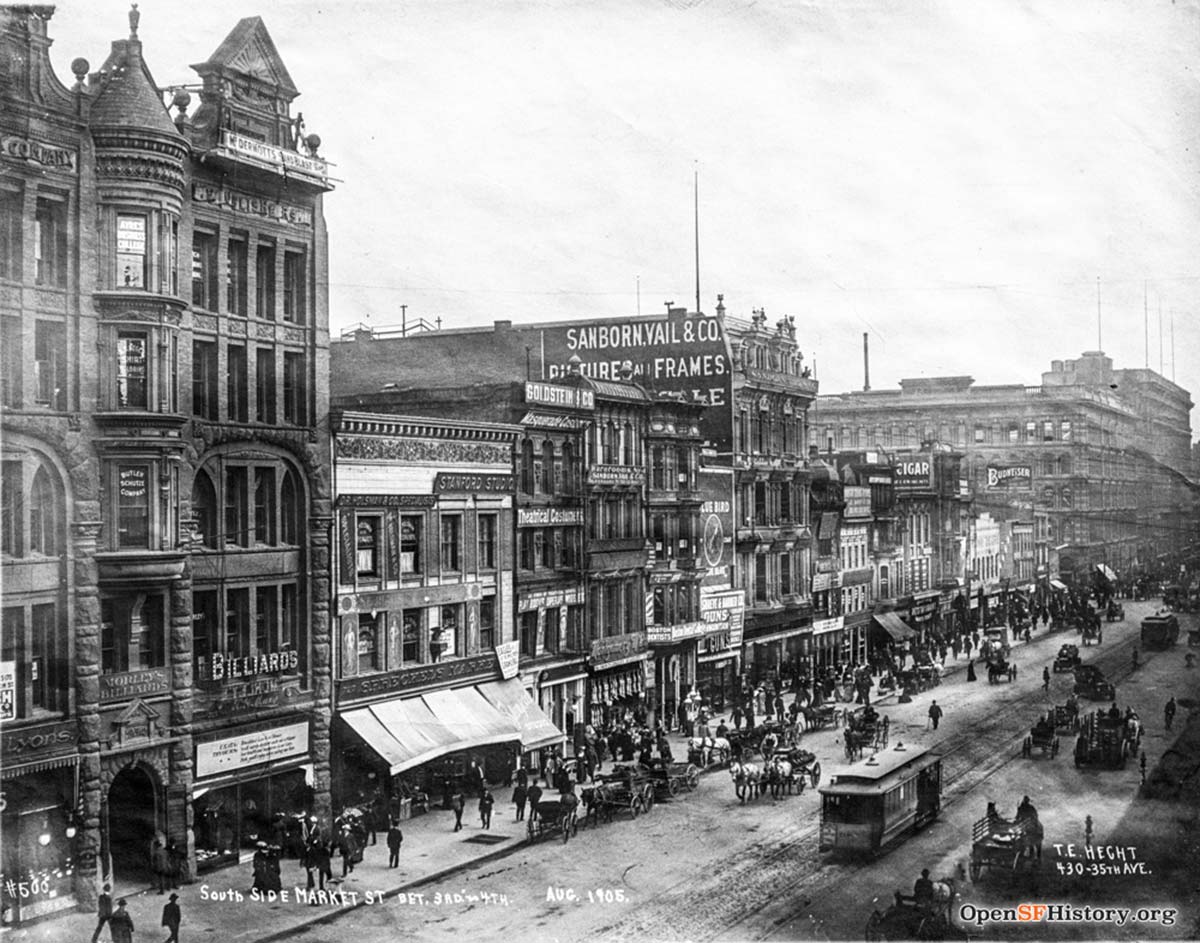
Another interview subject, William Murray, was just six years old at the time of the earthquake. He remembered watching the city burning from Telegraph Hill and his mother telling him “William, you are now a pioneer of new San Francisco.”
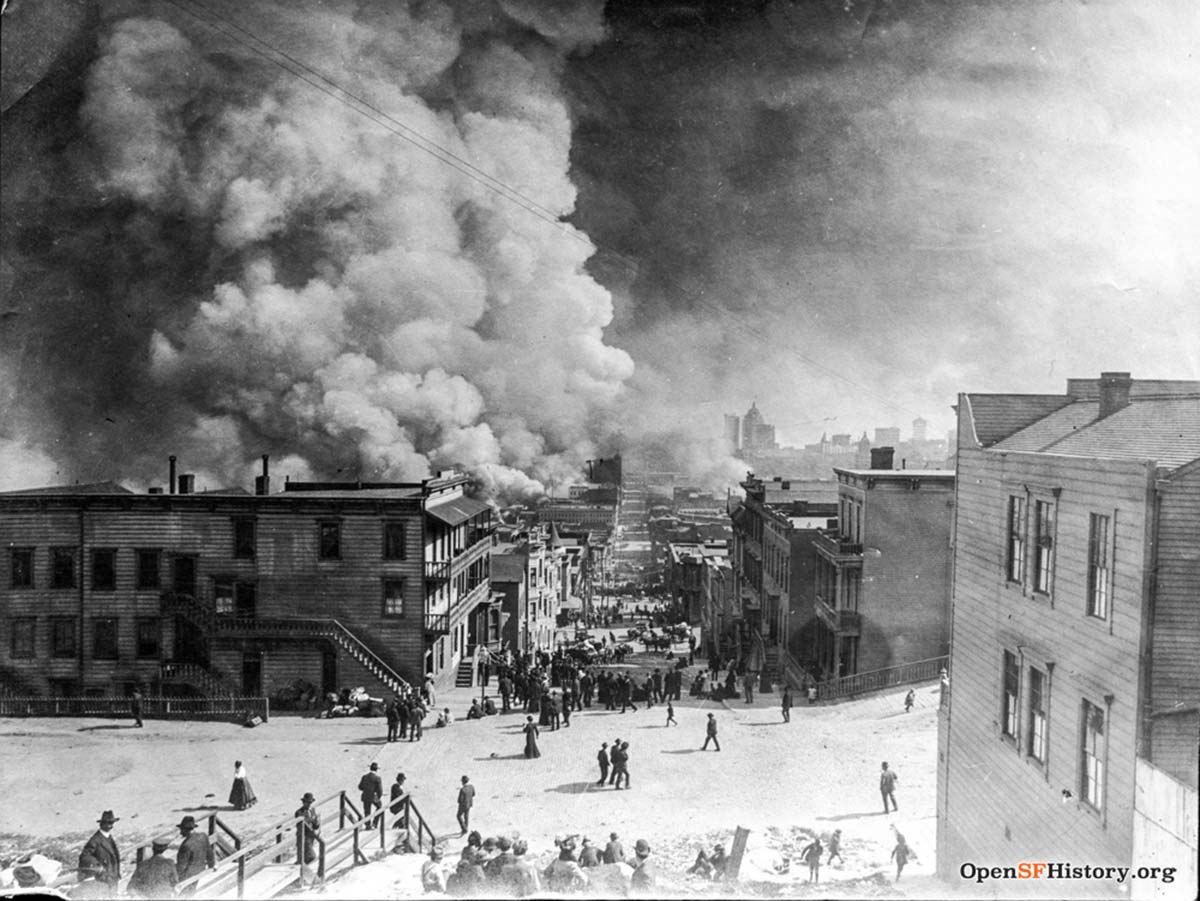
Last year I imagined how my great-grandparents got through San Francisco’s three days of earthquake and fire—a disaster that brought them together (and eventually me into existence.) Now I want to speculate where Mr. Wagner was that long last night in “old” San Francisco.
San Francisco was more of an all-hours city in those days. Home entertainment options were limited and many people lived in shared rented rooms or with extended families. (Wagner lived with his sister in Buena Vista Heights.) Young men wanted to be out, and out late, even on a Tuesday night.
There was a lot to get up to in the early hours that wasn’t advertised in the newspapers of record, and I don’t want to make assumptions about Mr. Wagner’s proclivities, so I will limit myself to some respectable early evening options.
Carmen and Caruso at the Grand Opera House
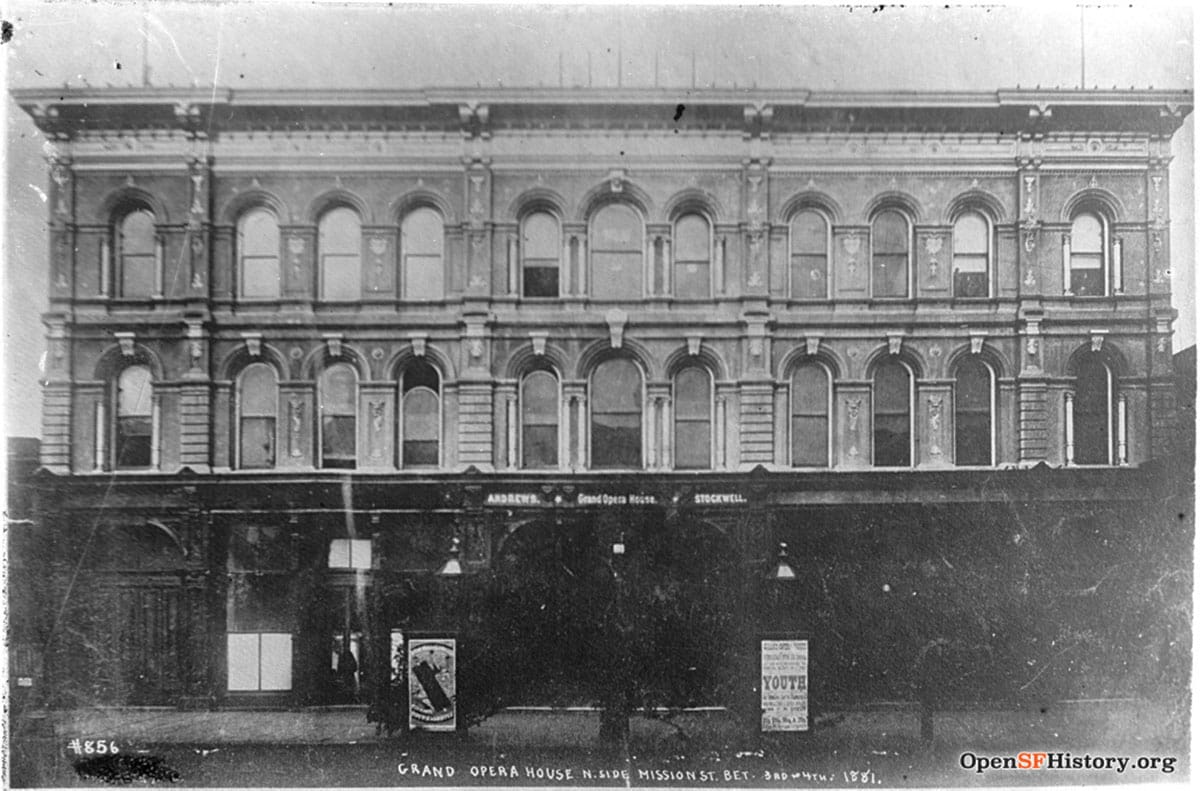
The great tenor Enrico Caruso was in town with New York’s Metropolitan Opera. He was the big draw playing Don Jose in Carmen on the evening of April 17. (The Call did think the production “lacked in some degree of distinction.”)
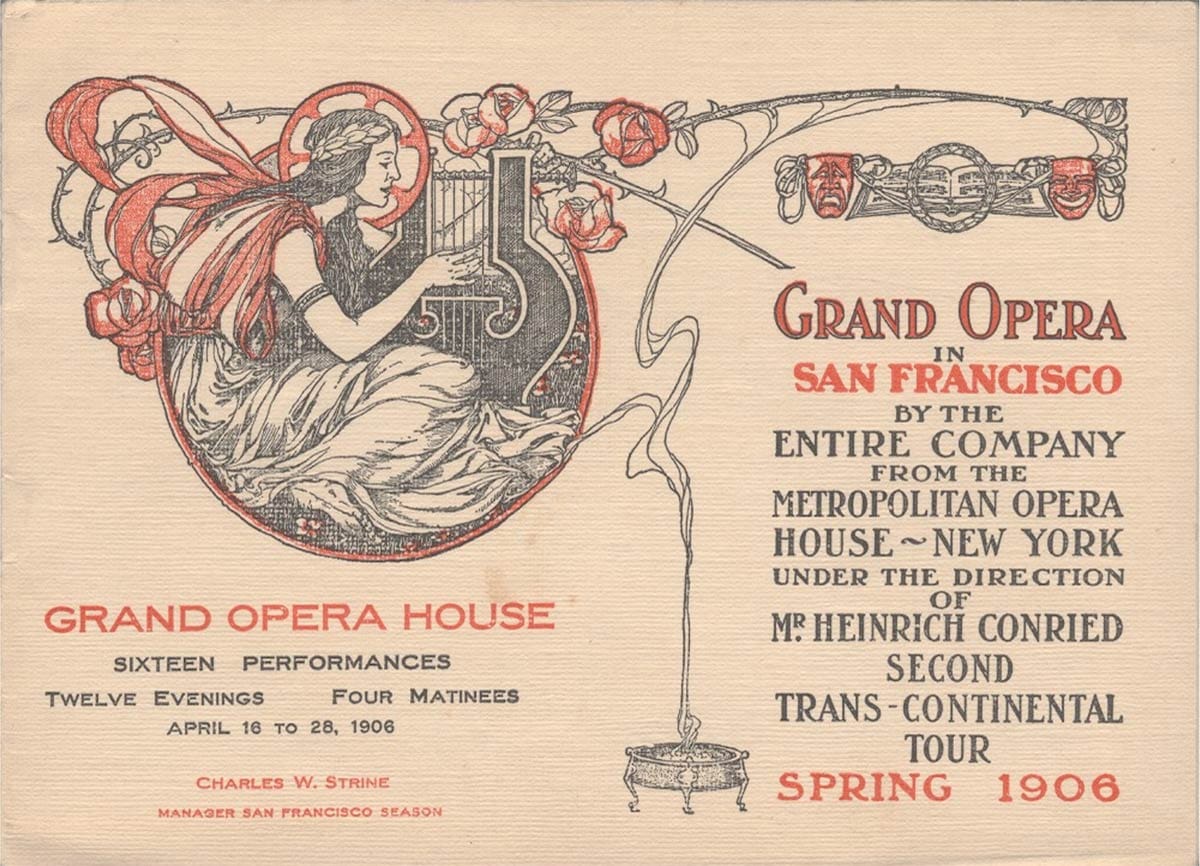
Perhaps opera wouldn’t be in the wheel-house for a young man in construction?
On the other end of the spectrum, Babes in Toyland at the Columbia Theater likely wasn’t Mr. Wagner’s cup of tea either. A Chronicle reviewer opined that the stage manager had a “deplorable faculty of putting the mature ladies of the chorus in front, and relegating the chic and spirited damsels to the rear—a situation as inexplicable as needless.”
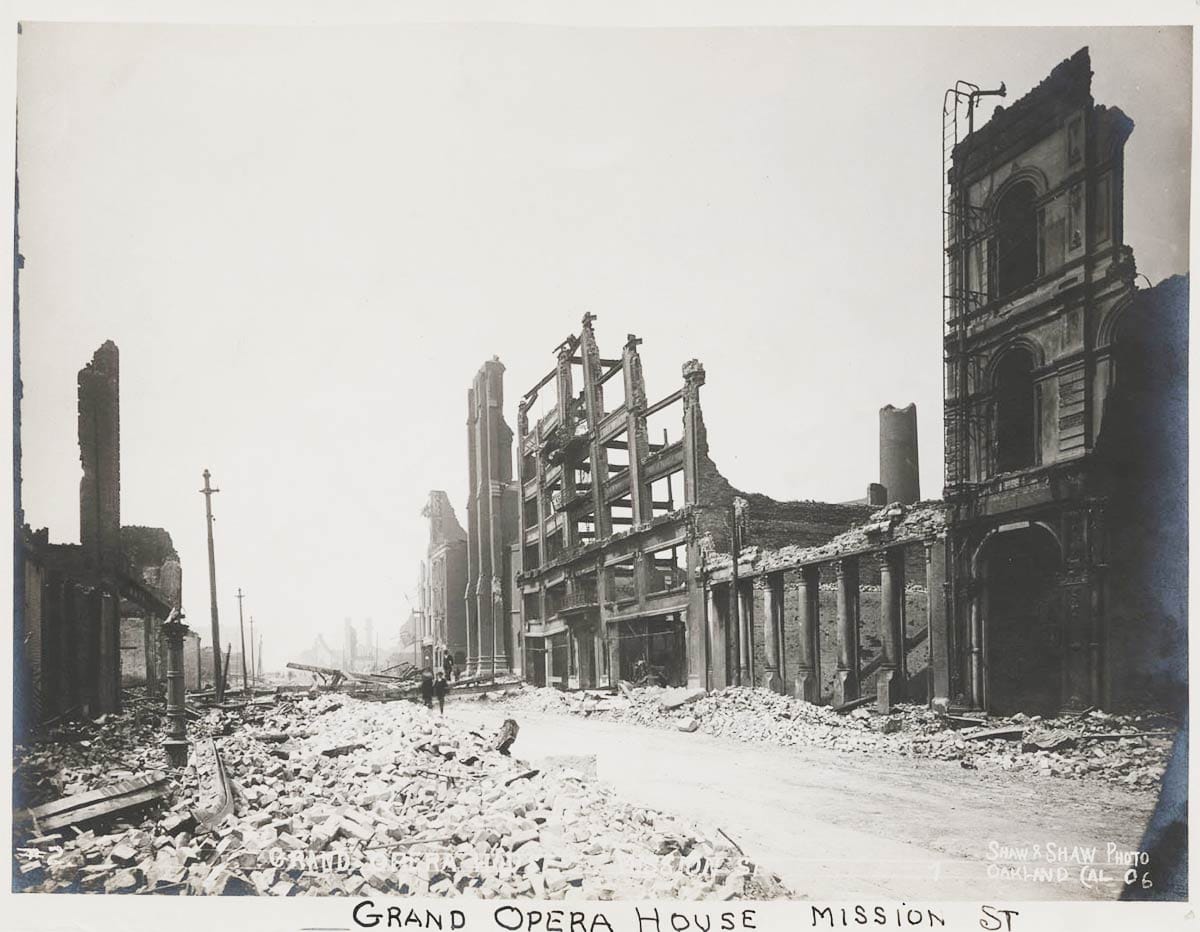
All right, let’s keep guessing.
“Who Goes There?” at the Majestic
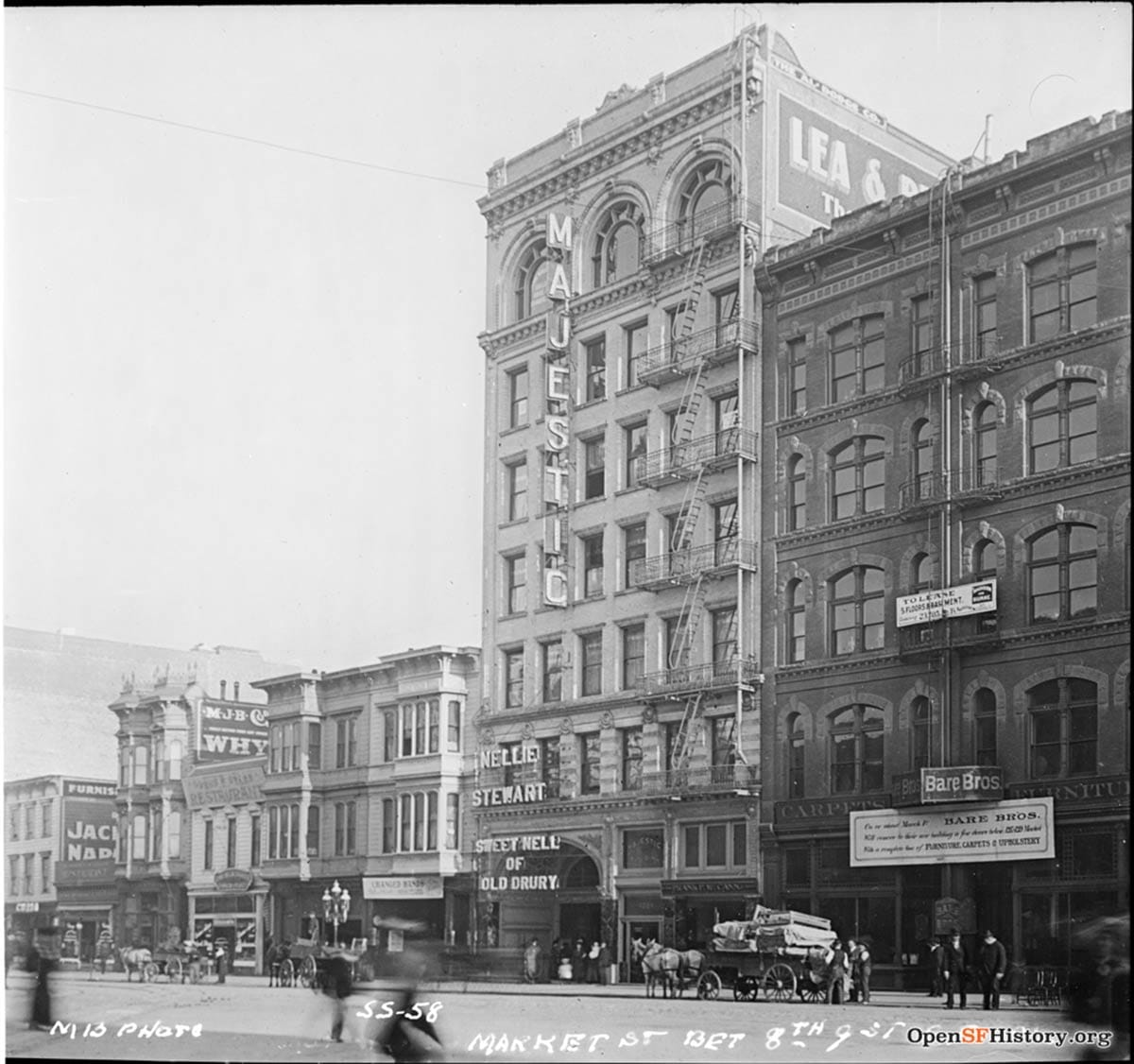
Led by the comedian Walter E. Perkins, Who Goes There? at the Majestic on Market Street was a farce featuring three eloping maids. The Bulletin thought the play had “snap and vim” and kept the audience “in a continual state of mirth for nearly three hours.”
A good candidate, I think, although as the fun was described as of the “cleanest character,” maybe too tame?
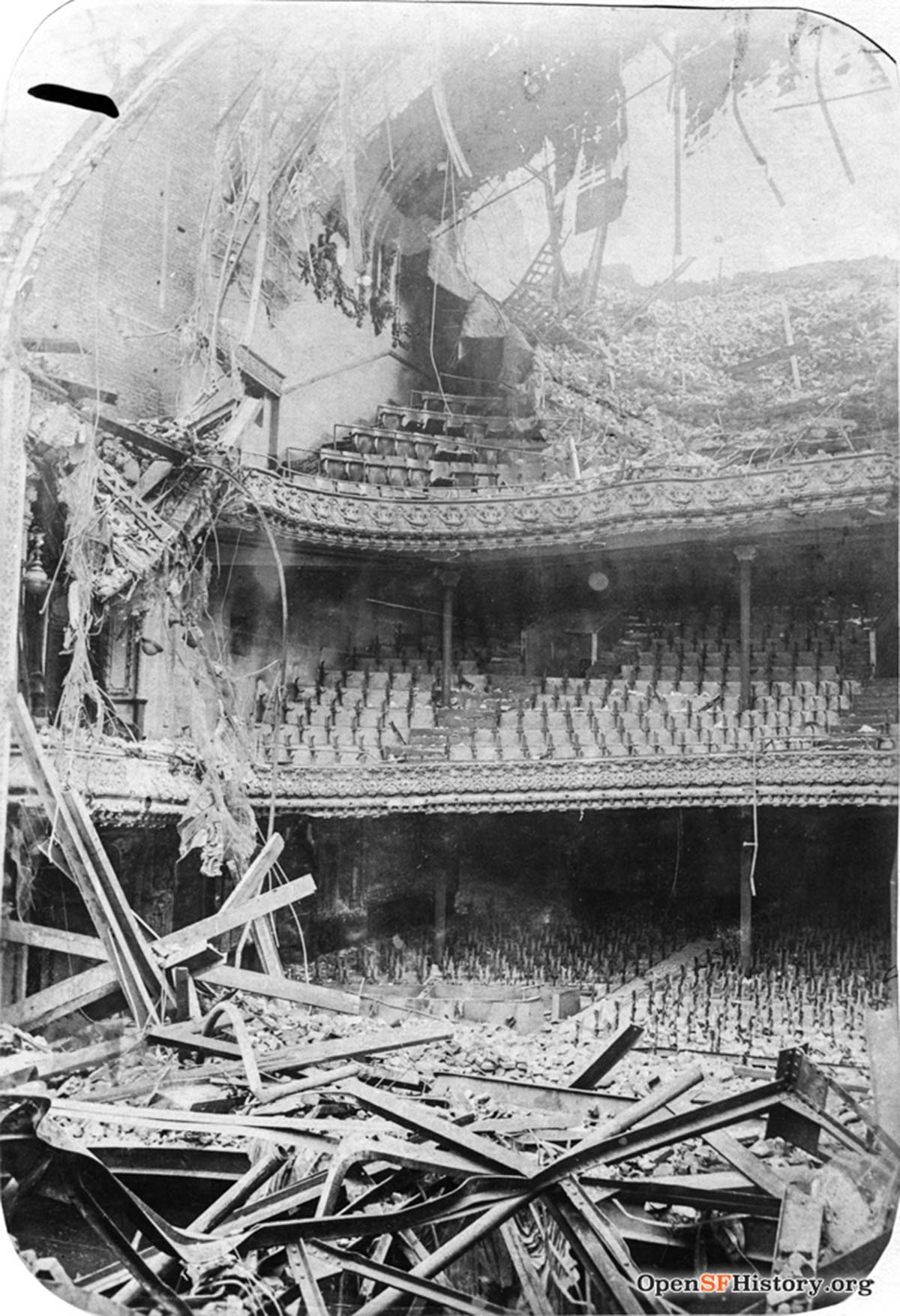
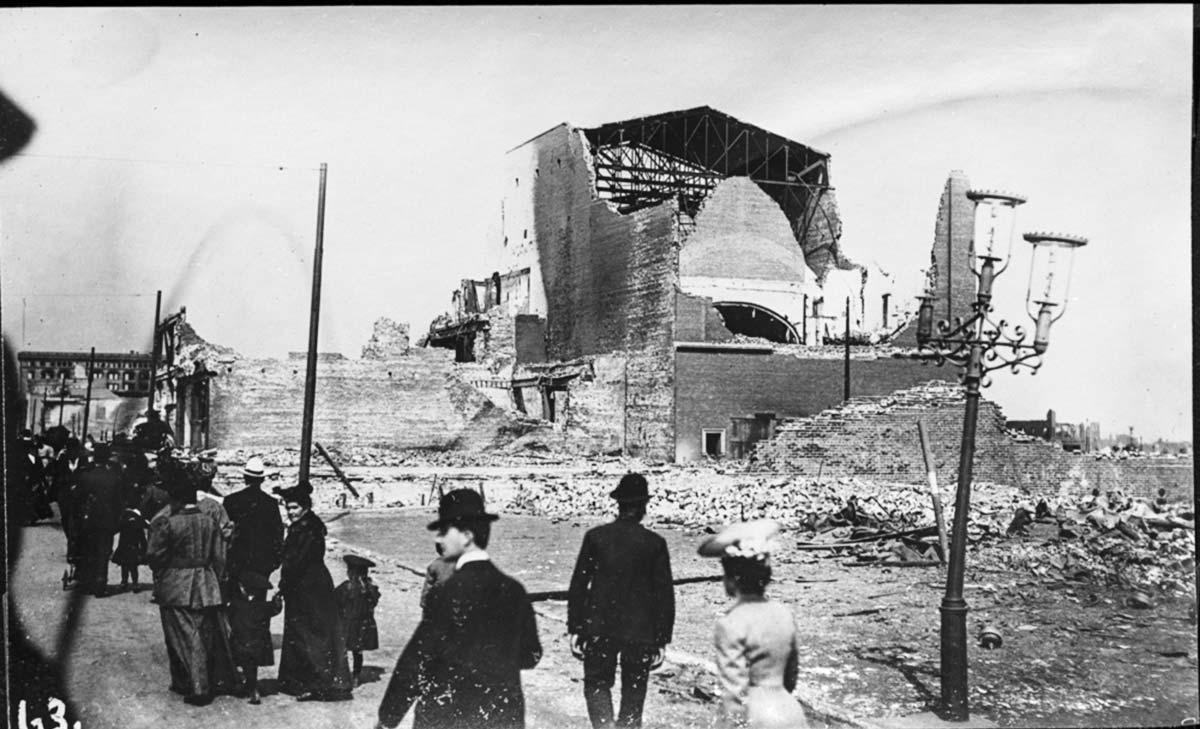
The Majestic made for some majestic ruins after the quake and fires. Let us keep our quest going...
Miss Timidity at the Tivoli
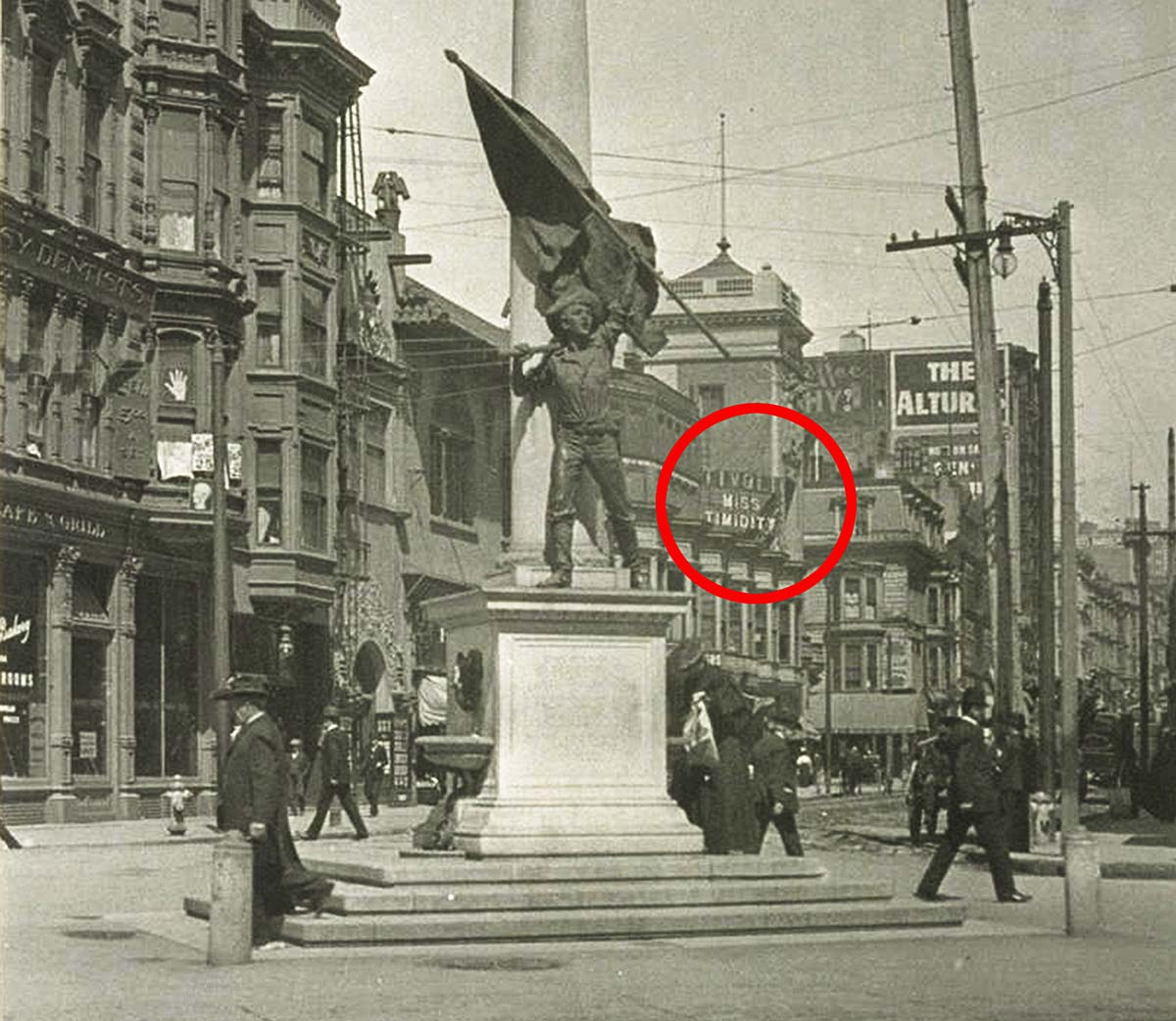
Miss Timidity closed on the night of April 17, so Mr. Wagner may have made an effort to catch it at the Tivoli Opera House at Eddy and Mason Streets if he hadn’t already seen it.
An eccentric revue with catchy tunes like “Mother, Mother Pin a Rose on Me,” the show also had a character named Marmaduke Milksop. Sounds rollicking. The Chronicle reviewer noted Cecelia Rhoda showed “some shapely ankles” and the production had “spice.” This is a real contender.
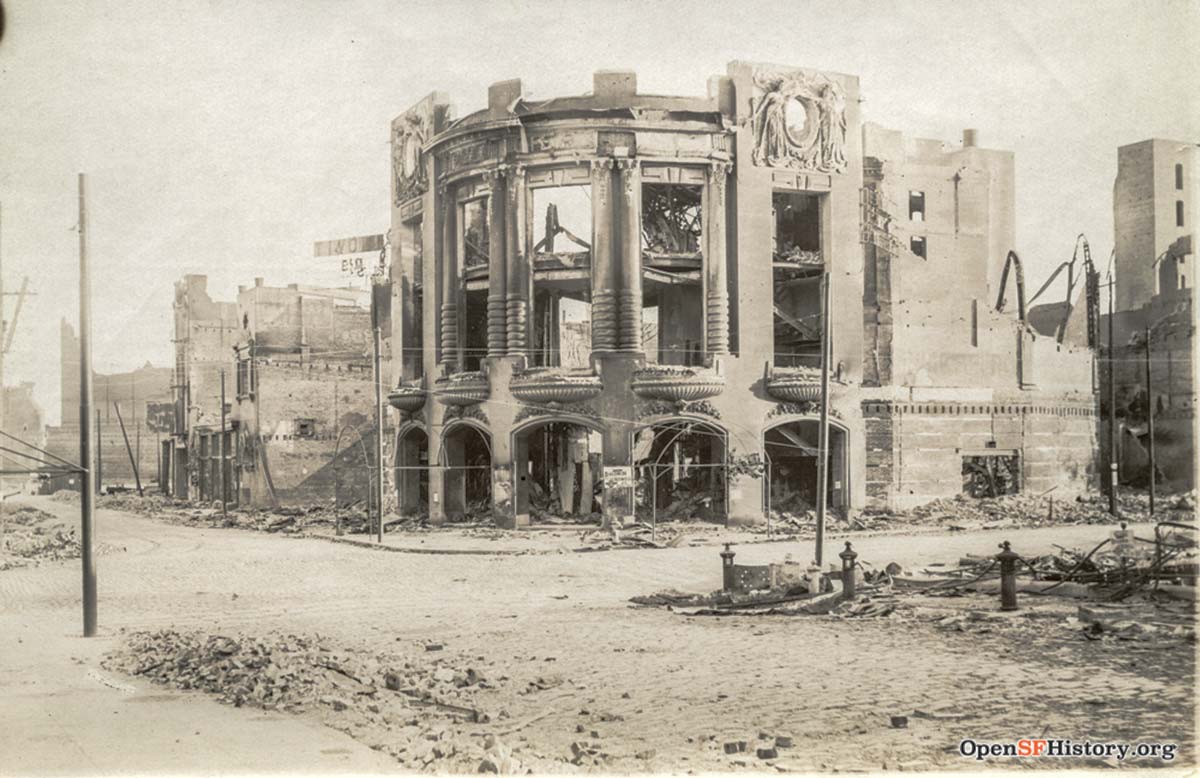
The last night of Miss Timidity was also, of course, the last night of the Tivoli.
The Cherry Blossom Burlesquers at the California
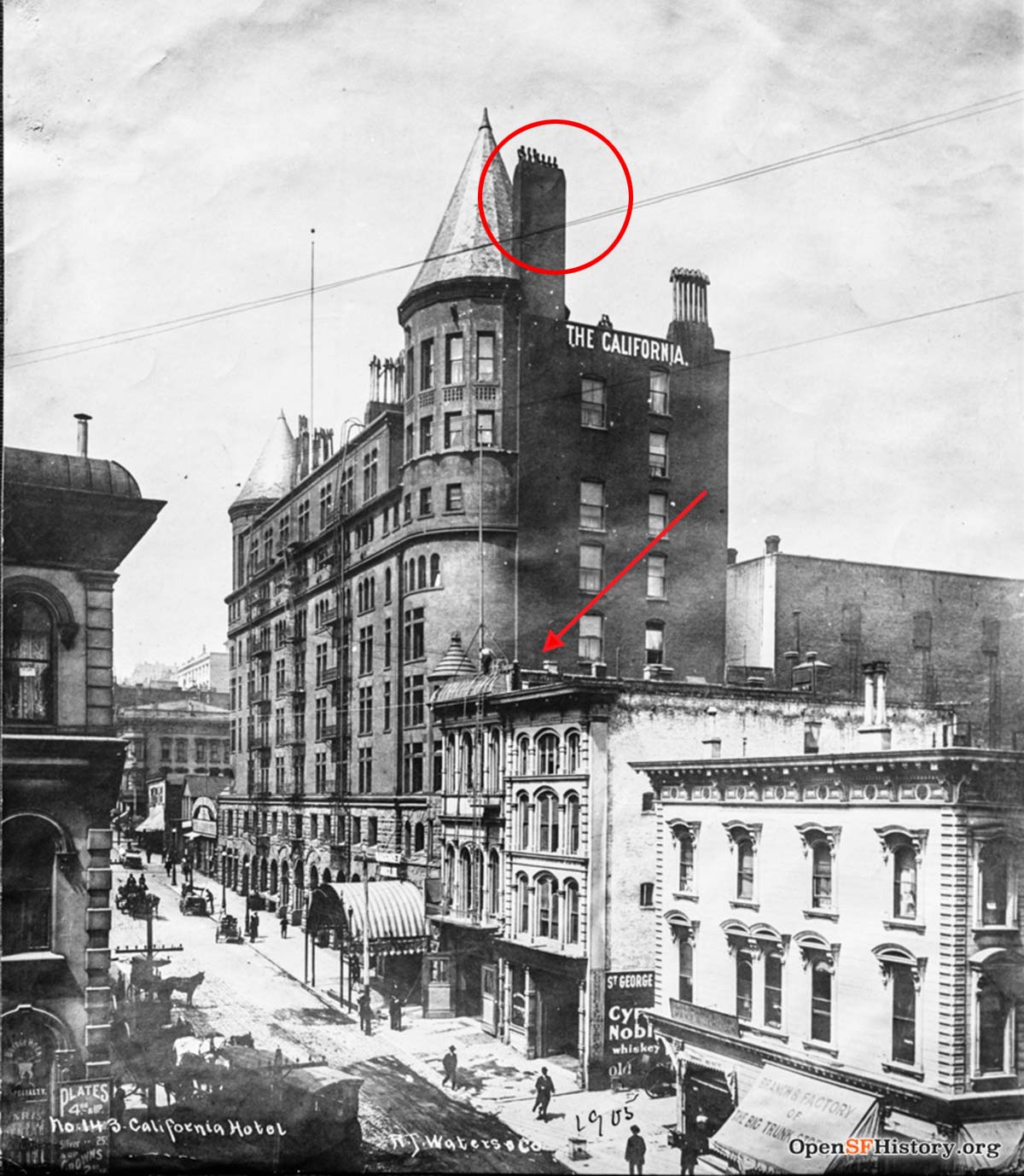
The Cherry Blossom Burlesquers’ renowned “beauty chorus” and one of the cheapest seats for the night (15 cents was the lowest ticket price) could have been a draw to the California Theater on Bush Street near Kearny. But the reviews were tepid for the 35-person company of song-and-dance folk and their show: “a couple of fairly good tunes.”
If Mr. Wagner did see the Cherry Blossoms at the California he would no doubt have been deeply affected by its significant and tragic role the next morning. The chimney of the California building collapsed into the neighboring fire station and fatally injured the San Francisco fire chief, Dennis T. Sullivan.
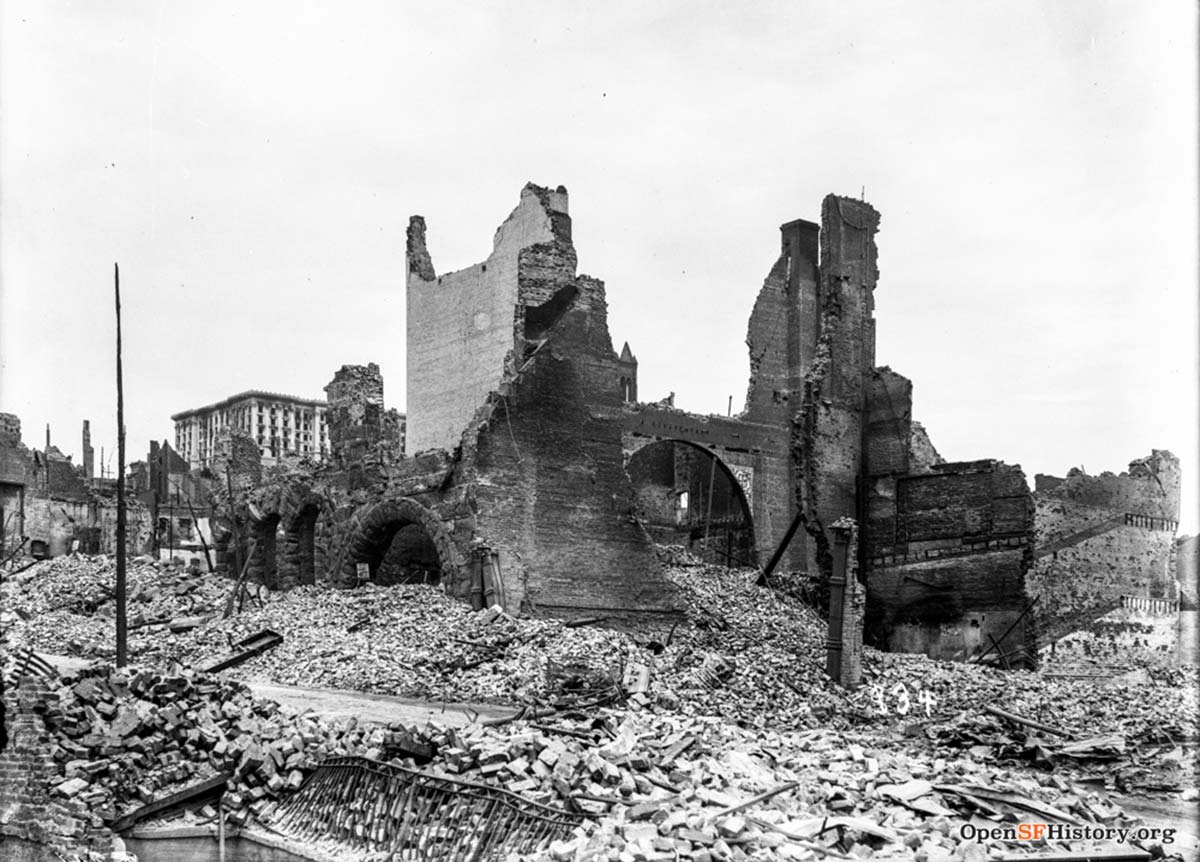
The city’s response to the earthquake and subsequent fires was greatly hampered by the loss of Chief Sullivan.
Roller Skating at the Central or Mechanics’
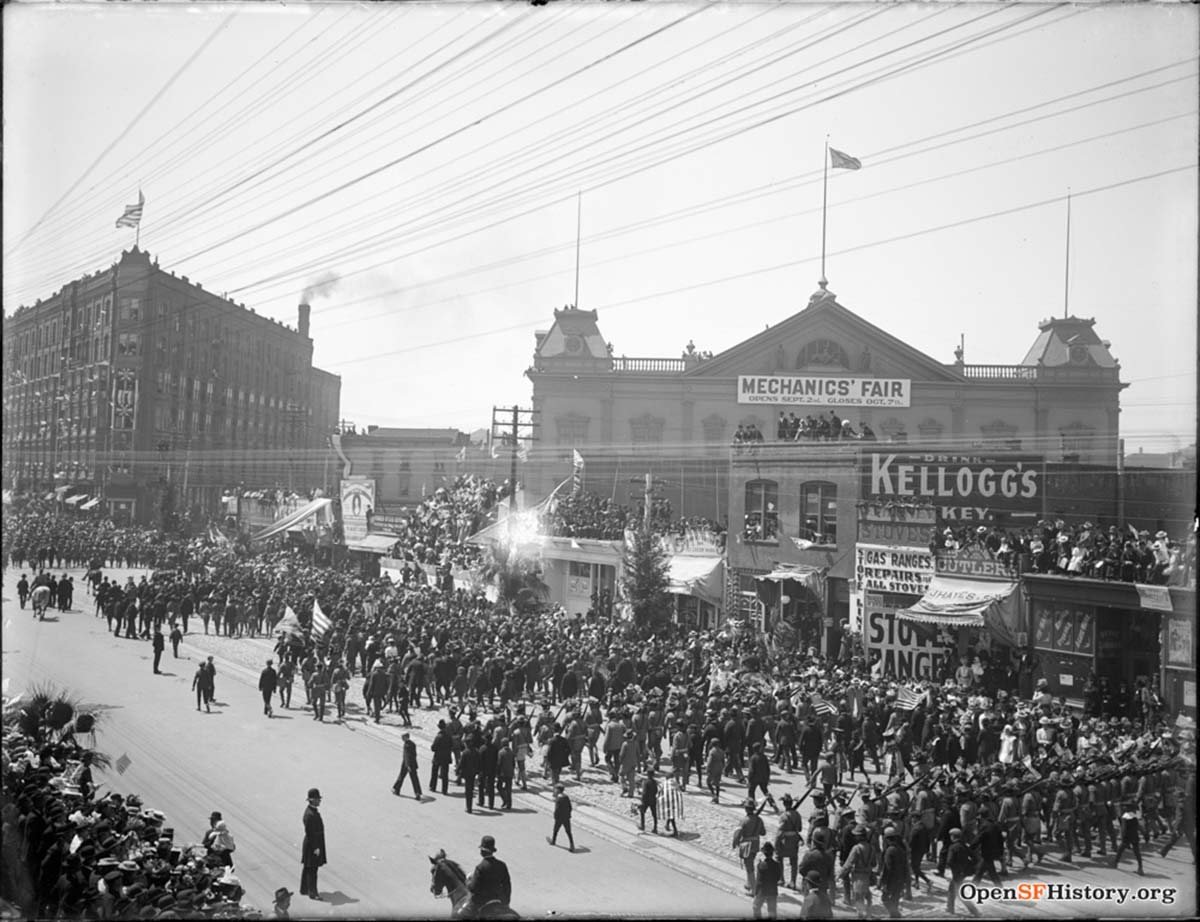
Roller skating was having a moment in 1906. Long a feature of novelty acts, the mass production of skates had made personal four-wheeling a popular pastime.
Mr. Wagner had a choice the night of April 17, 1906: see some experts do their stuff or get rolling himself.
Child wonder Lillian Franks and her father “Professor” Charles L. Franks had the Central Park Skating Rink at Market Street near 8th Street booked for a run of shows, which included an ever-changing exhibition of tricks, including skating on stilts.
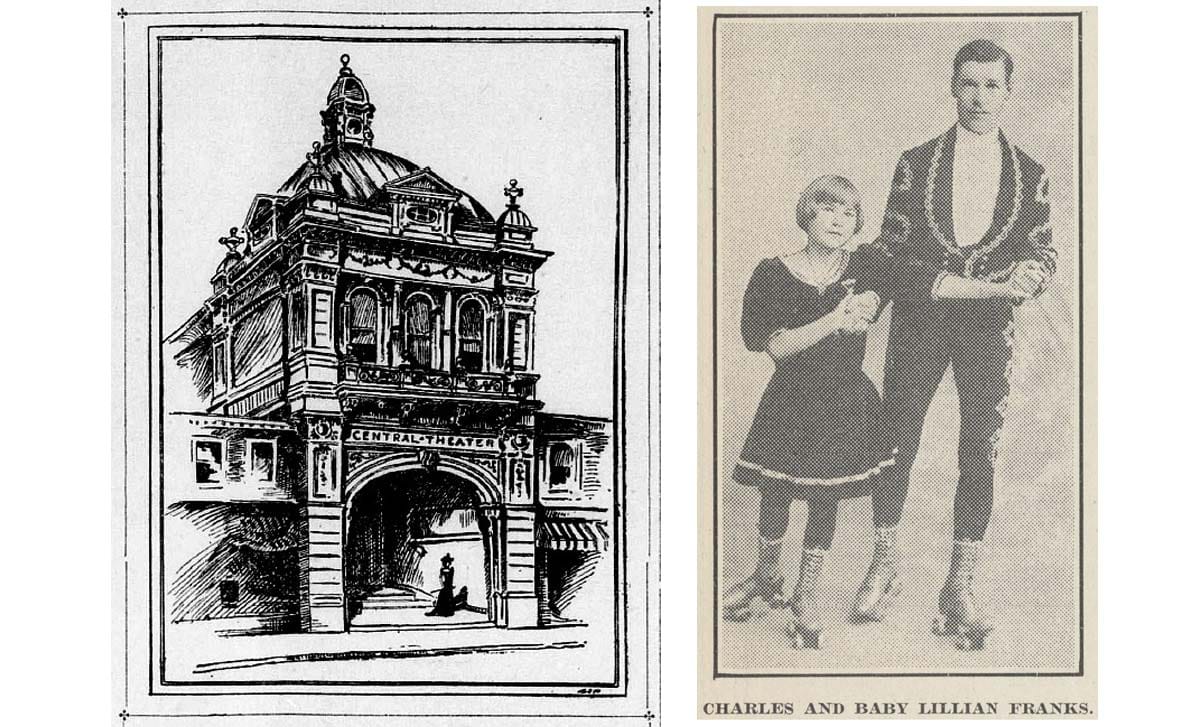
The Central Park had opened as a “panorama” also called a cyclorama: a circular auditorium with painted scenery depicting historic events or distant locales. As such, it was well adapted for a roller rink theater. (The Tivoli Opera House also started life as a panorama.)
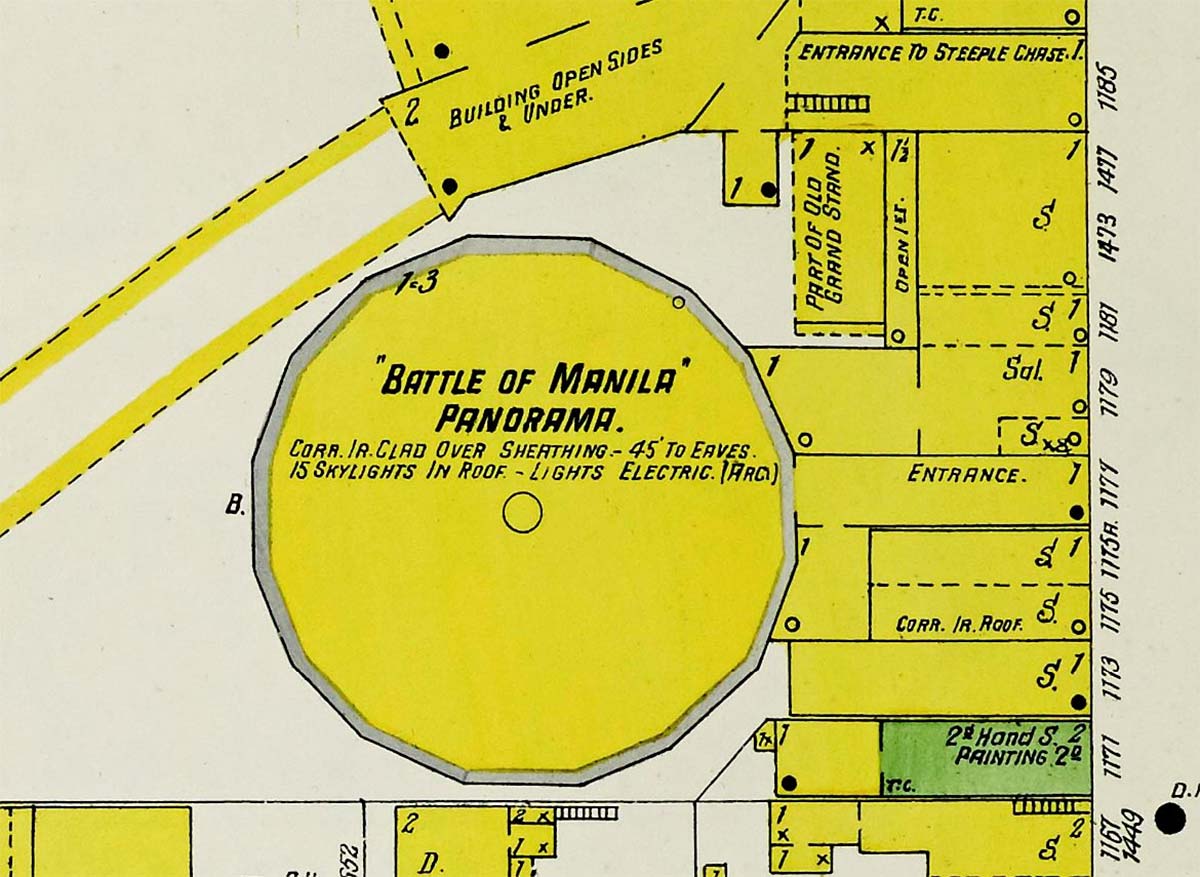
Meanwhile, a block away at the Mechanics’ Pavilion, self-styled as “The Big Place,” a masked skating carnival was held from 7:00 p.m. to 11:30 pm. on April 17, 1906. If you didn’t have the duds, a costumer on site could get you done up.
The next day, the Mechanics’ Pavilion was used as an emergency hospital and morgue after the earthquake. The fires closed in by 1:00 p.m., forcing a calm, if hurried evacuation of patients before the building was incinerated.
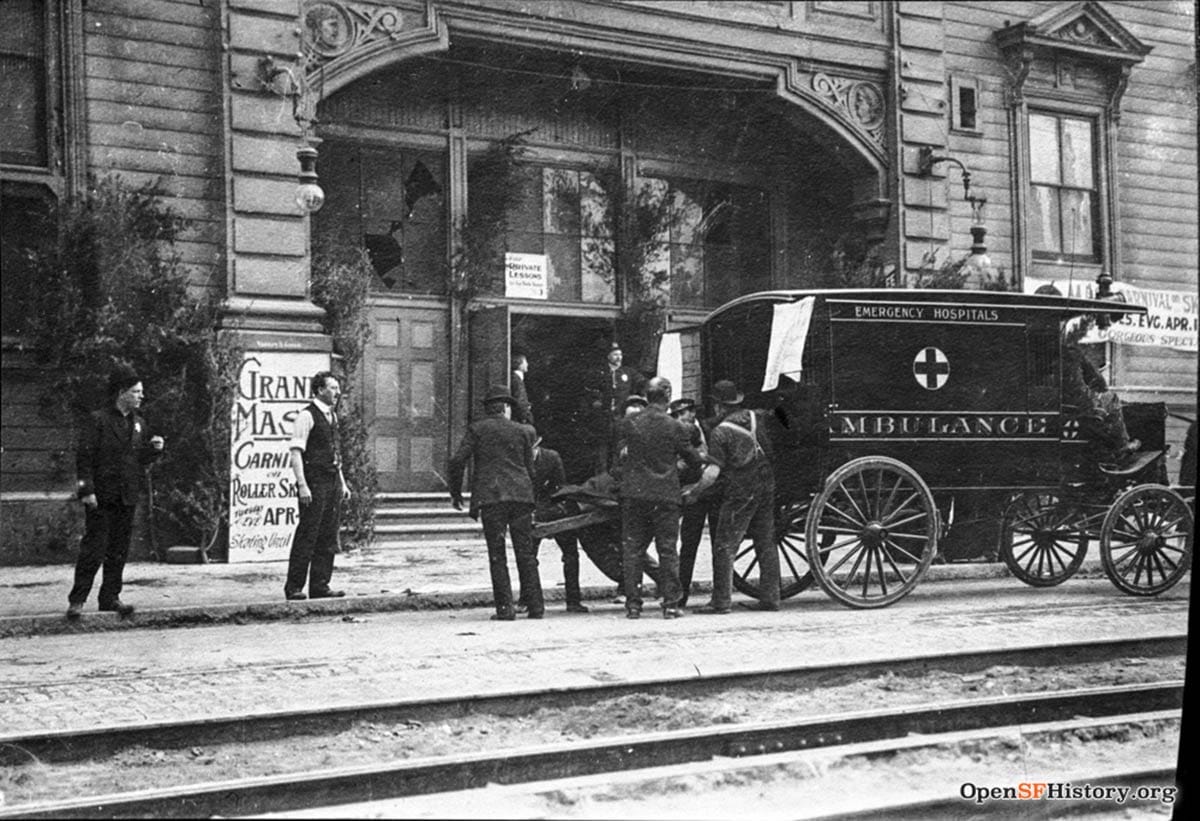
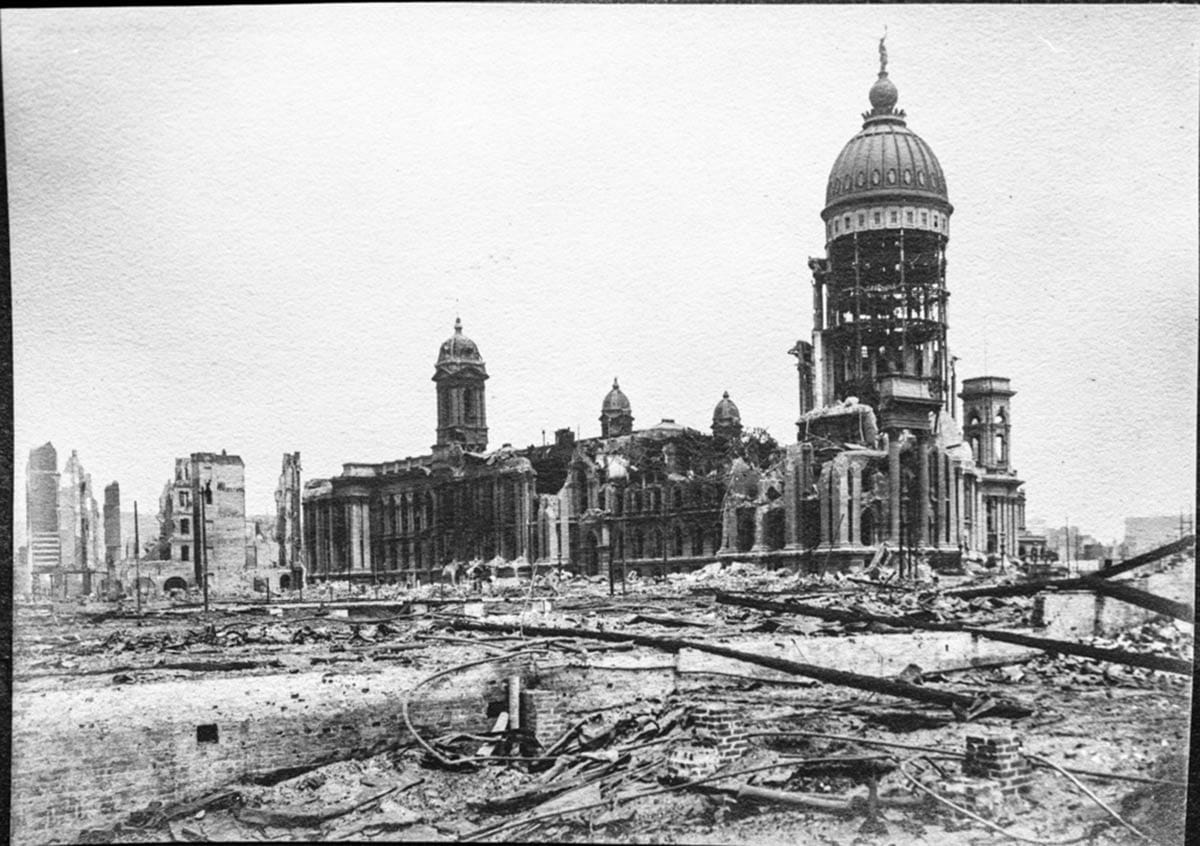
Again, if Mr. Wagner had been skating at the Mechanics’, which had such a dramatic story attached with the disaster, he probably would have mentioned it. Today the site is occupied by the Bill Graham Civic Auditorium.
Anything (and everything?) on O’Farrell Street
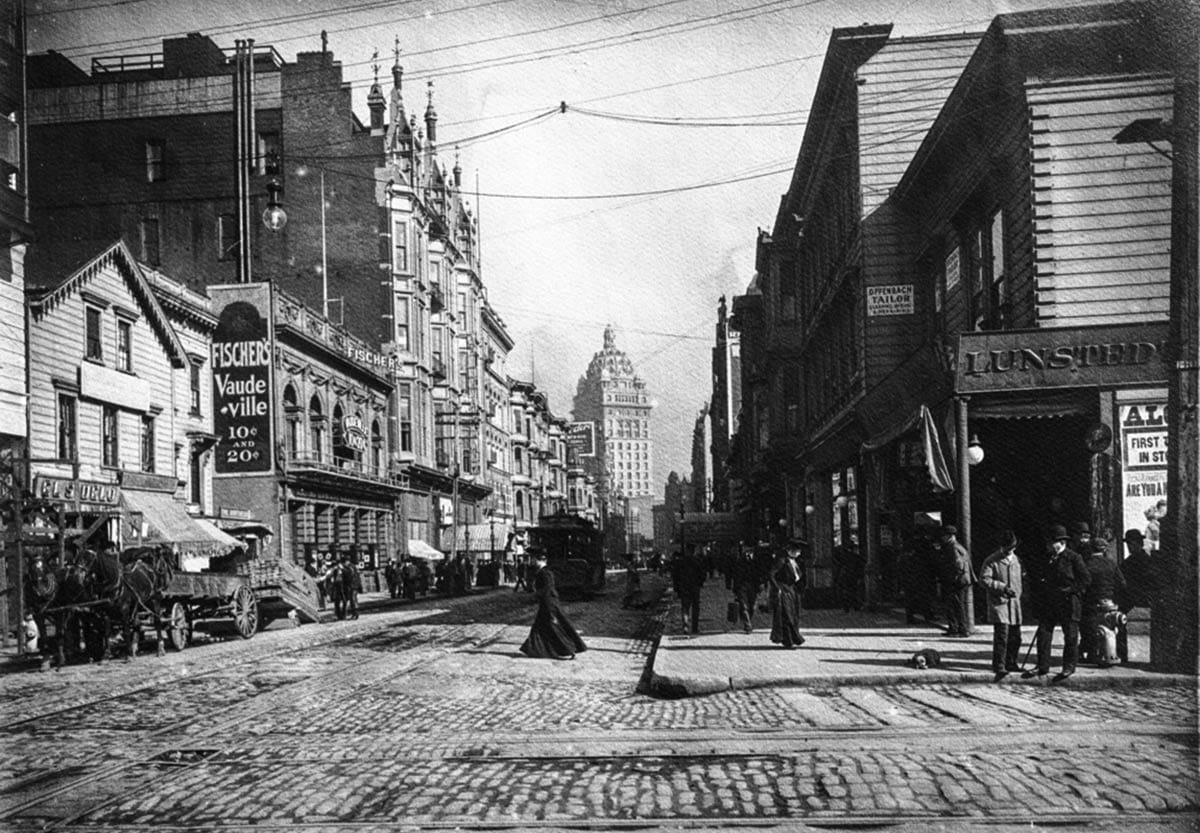
I think of O’Farrell Street between Powell and Stockton Streets as the Macy’s block, although I suppose it won’t be for long, as the department store has announced plans to vacate the site. In 1906, it was a locus of the theatrical arts.
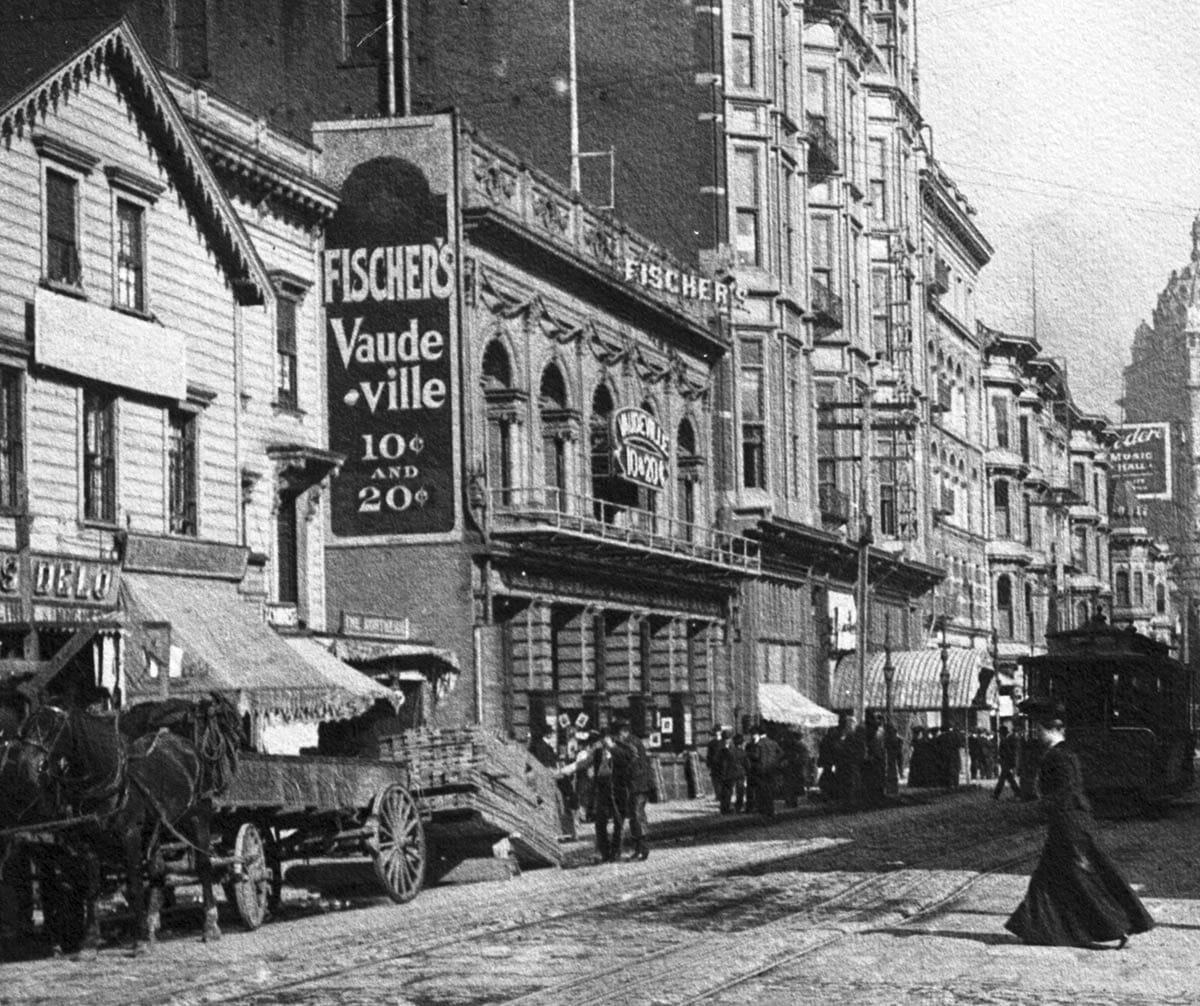
Fischer’s offered rotating vaudeville acts you could enjoy for a dime. Next door the Alcazar Theatre had the popular comedy Are You a Mason? running.
The plot: A husband tries to explain his late irregular hours to his wife by claiming to be a member of a secret fraternal order. He then has to vet potential son-in-laws by having them also pretend to be Masons and back him up. It had already been staged at the Columbia and the California in 1903 and the Alcazar once before in early 1905 when the above photo was taken.
Across the street, the Orpheum reportedly achieved “vaudeville perfection” in a production named Motoring. Also on the bill was some cutting-edge technology, “Orpheum Motion Pictures.”
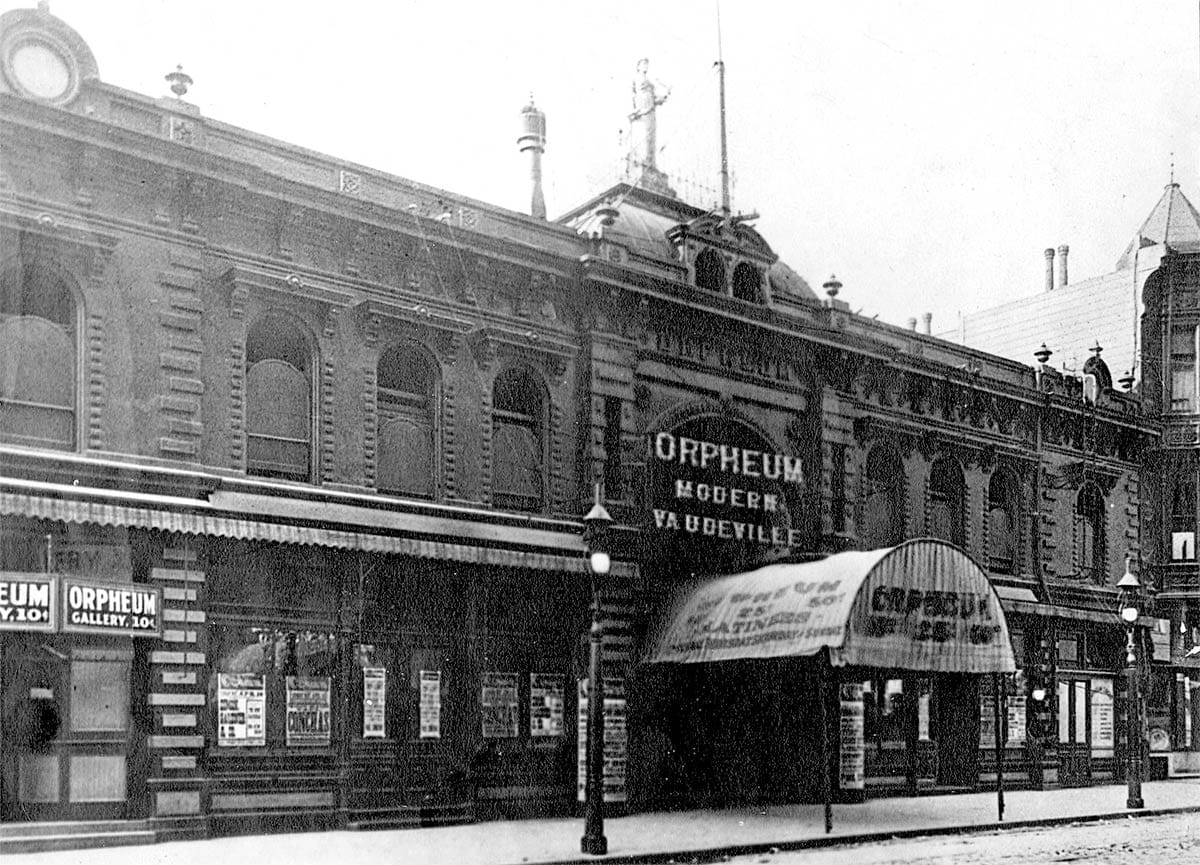
No telling what our boy Wagner got up to after midnight, but I like to imagine he spent at least part of the last hours of April 17th on O’Farrell Street, either at one of these amusement halls or Delmonico’s restaurant or the Lunstedt Brothers liquor emporium on the corner of Powell Street.
Here’s what the block looked like the next morning.
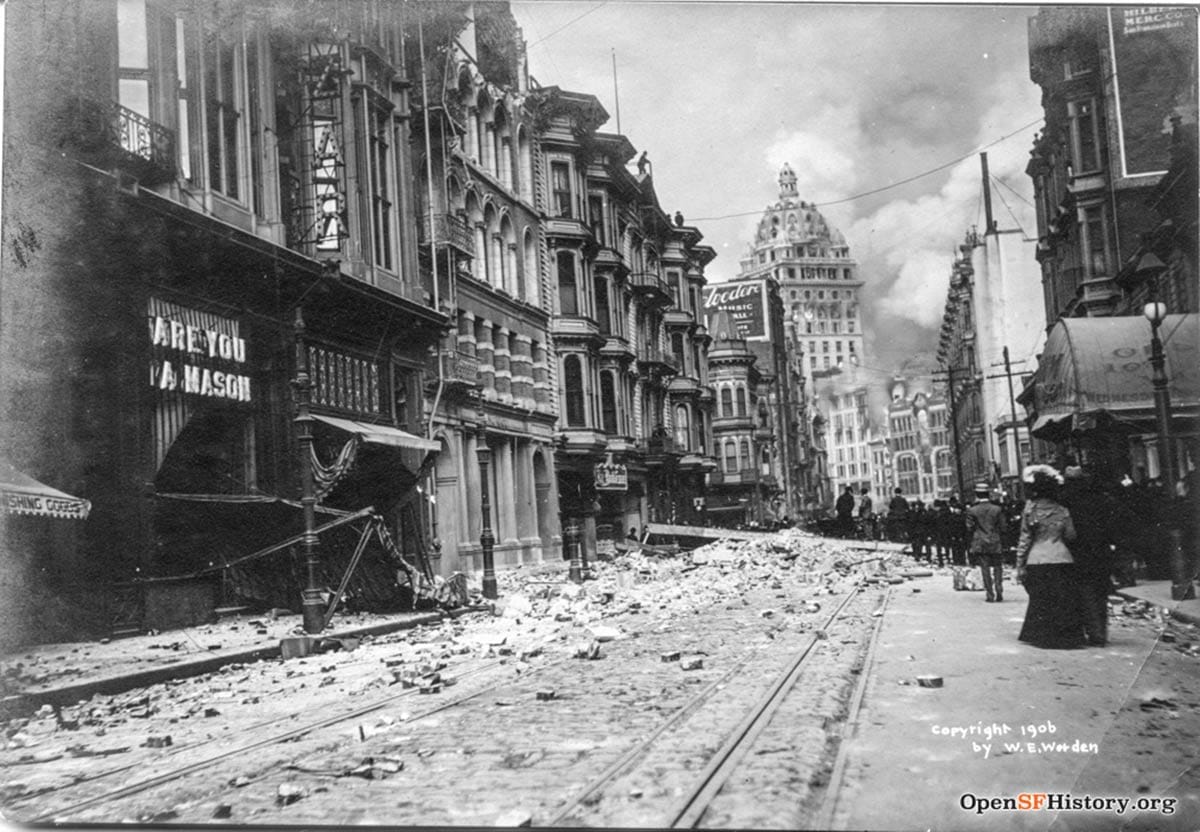
And after the fires had their way:
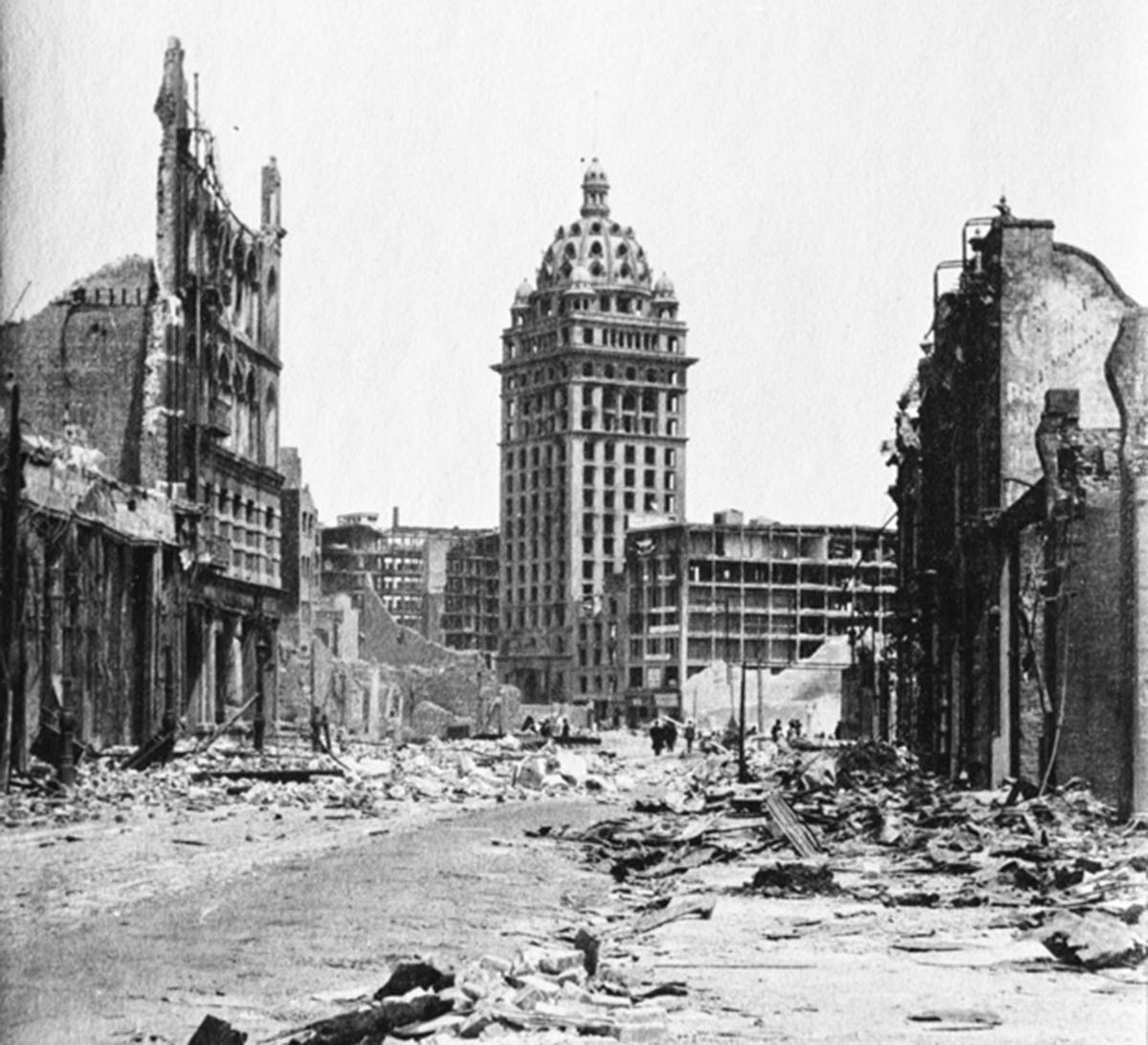
After seeing out the old, George Wagner helped build the new San Francisco. His construction firm worked with architects Bakewell and Brown to create San Francisco’s current city hall.
Perhaps sometime between 1978 and when he passed away in 1982 (at 101 years old!), Mr. Wagner finally found the right moment to share where he was until shortly before 5:12 a.m. on April 18, 1906.
If you heard his story, let me know.
Woody Beer and Coffee Fund
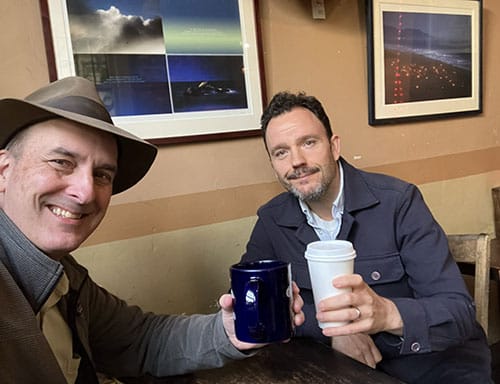
Last year, Nancy and I went to a bar in Mexico City which had a Charles Bukowski theme. I snagged a coaster with a quote of his: “These words I write keep me from total madness.”
All and all, I have it better than old Chuck did, but that’s sort of how I feel about the San Francisco Story project. Thanks for keeping me sane and for making sure I get out and have a beer or coffee with cool people.
If you’d like to chip in to the Woody-sipping fund, feel free! If you want to take advantage of the fund’s mission and have a drink with me, let me know when you’re free. Or do both! 😉
Sources
As always with theater-related topics, Bill Counter's ever-growing San Francisco Theatres blog is an essential resource!
Patricia Turner, ed., 1906 Remembered: Firsthand Accounts of the San Francisco Disaster (San Francisco: Friends of the San Francisco Public Library, 1981)
“Central Theater Will Be One of Prettiest of City Buildings,” San Francisco Call, December 13, 1900, pg. 7.
“New Bills at the Theaters,” San Francisco Chronicle, April 3, 1906, pg. 7.
“Old Favorite Given Fine Revival,” San Francisco Bulletin, April 10, 1906, pg. 9.
“Changed Bills at Theaters,” San Francisco Chronicle, April 17, 1906, pg. 2.
“Chorus Quite Fetching in ‘Babes in Toyland,’” San Francisco Call, April 17, 1906, pg. 20.
“Masked Carnival at Rink Tonight,” San Francisco Bulletin, April 17, 1906, pg. 1.
Blanche Partington, “Caruso Makes Don Jose the Leading Role,” San Francisco Call, April 18, 1906, pg. 5.
W. A. La Duque, “Roller Skating Rinks,” The Show World, May 2, 1908, pg. 6.
George Wagner obituary, San Francisco Chronicle, November 1, 1982, pg. 28.

